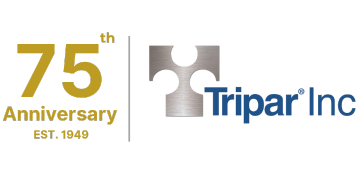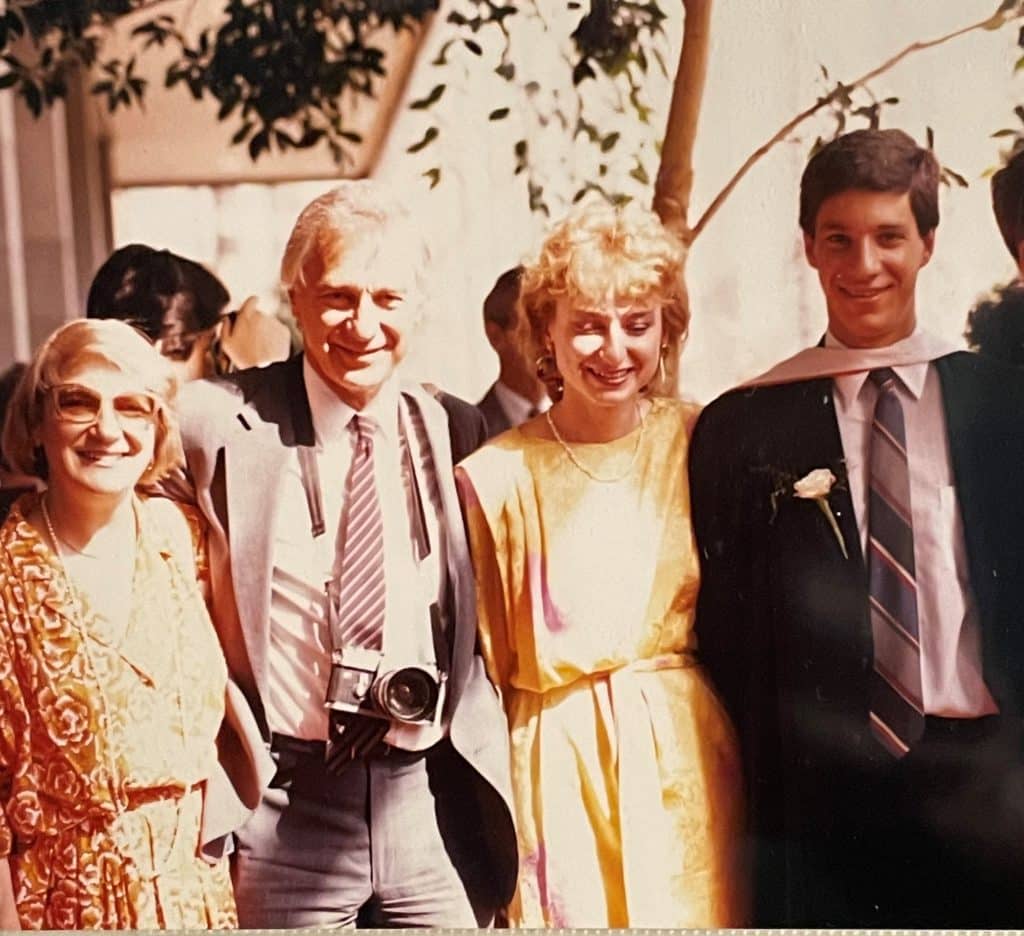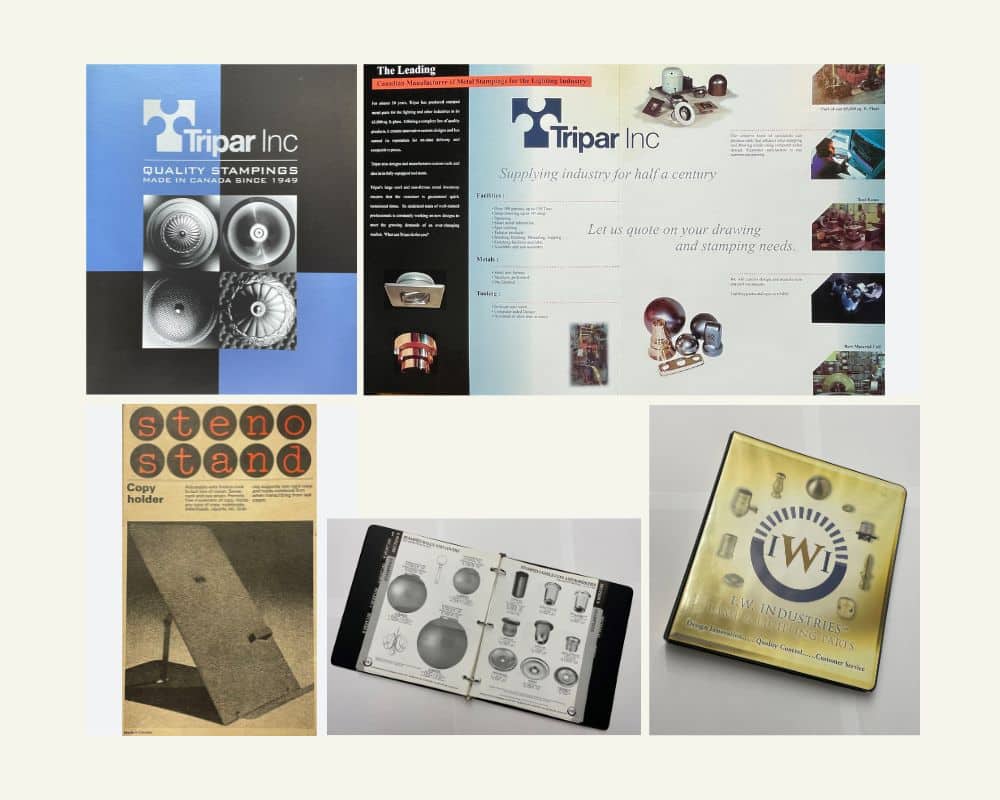Introduction
With a lot of success and growth in the 50s, Tripar quickly outgrew its rented premises on Hayes Avenue and bought more than three acres of land in the east end of Montreal, shortly thereafter erecting their first owned plant of 10,000 square feet.
Tripar's first expansion in 1965
Having quickly outgrown that space in just 5 years, Tripar’s first expansion was in 1965, adding 6,000 square feet bringing the factory to 16,000 square feet, followed by a second expansion in 1969 of 17,000 square feet, bringing the new total to 33,000 square feet!

Tripar’s architectural design for the 1965 plant
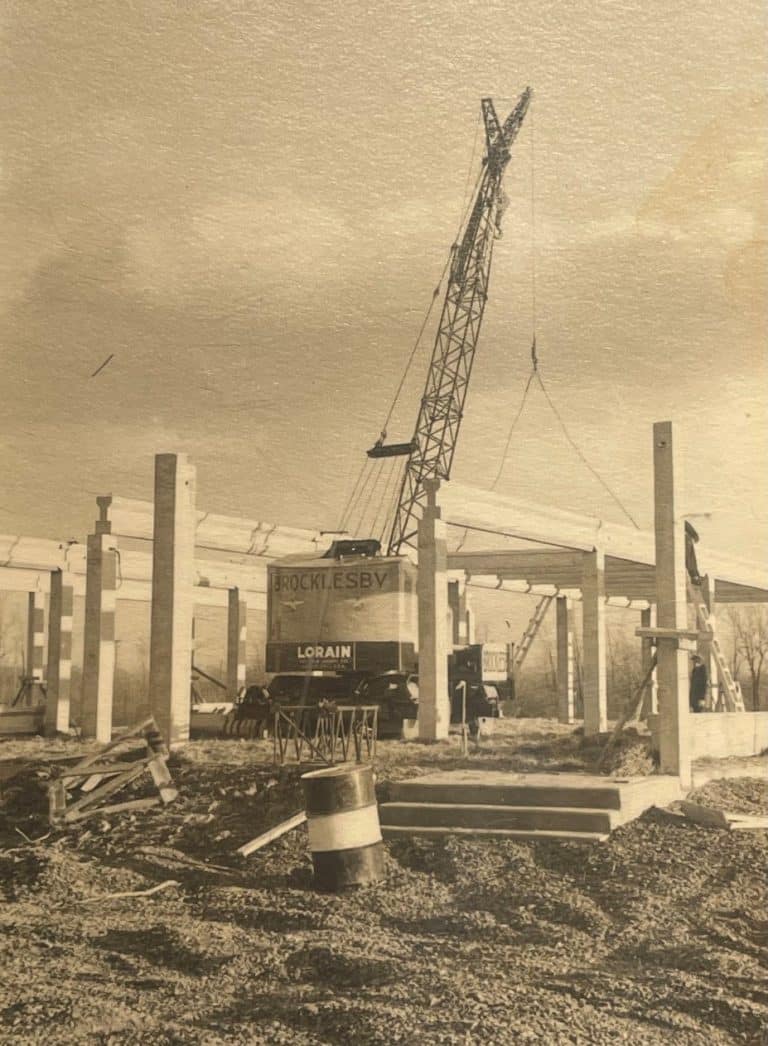
Tripar’s first plant construction in 1960
During this time, customers were obtained outside of Quebec, mainly from light fixture and lamp manufacturers in Ontario. Also, during this period, numerous light fixture manufacturers were looking for small diameter tubular arms; the curved shapes commonly found in chandeliers. With sufficient demand, Tripar acquired this manufacturing capability, obtaining equipment to cut, bend, bead & thread tubing, as well as solder fittings on.
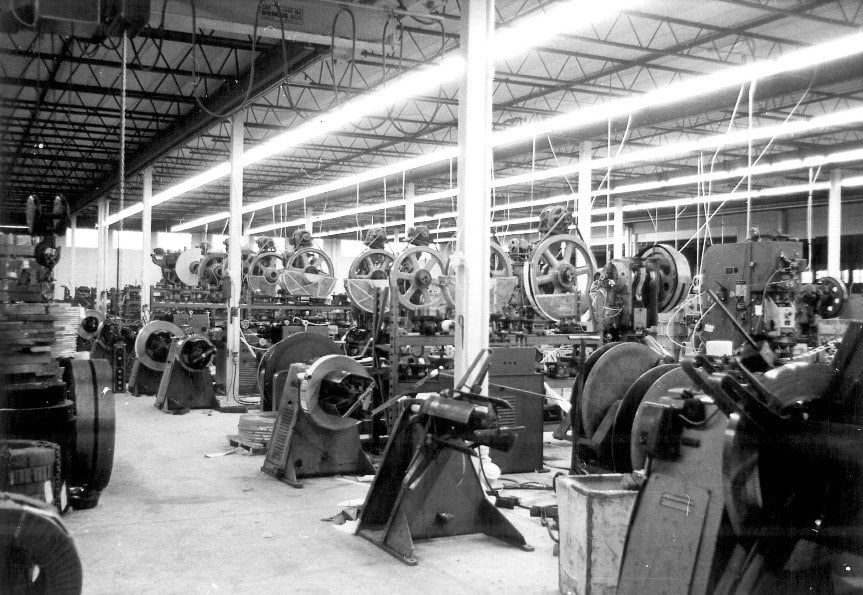
Vintage metal presses in Tripar’s facility

Small diameter threaded tubes

Bending equipment for metal tubes
During the latter part of this period, Tripar ventured for the first time into developing its own product line outside of lighting, a shelving system coined “Slydang” (no idea where the names comes from.) This was a system consisting of rolled formed uprights, sheet metal press brake formed shelves (both made out of a grey prepainted steel), and small threaded corner brackets. One of the benefits of this system (at the time), was the shelves could be infinitely adjusted in height and spacing.
Unfortunately, this never sold well. Though my father is 100 as of this writing, I will never know where the name Slydang comes from, nor its fateful evolution, and he can no longer communicate this to me, but the photo below was the logo; taken from the last bits of this shelving we still have and use!
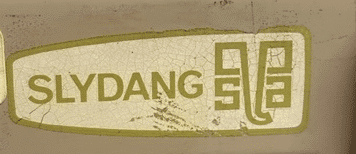
Slydang Logo
Memories from the Factory Floor
Toward the end of the 60s, I was almost 10 years old, and with Lego and Mecanno being my favourite toys. I loved visiting Tripar to see the mechanical equipment and how it all worked. On the odd school day off, I was finally allowed to go with my Dad for the day to work in the factory. Being under 18, I was not allowed to work on any presses (nor likely permitted to work in any capacity at that age).
Nevertheless, I was given manual jobs to do. Two of my earliest memories working there are;
“Hip Swing” assembly: This was a product developed by Ben & Joe Weider of Weider Fitness Equipment at the time, also in Montreal whom my Dad knew. This was not much more than a 1 foot diameter disc, that was able rotate on ball bearings over a baseplate. This was marketed toward women, who would stand on it, while oscillating and flexing (not unlike a hula-hoop motion), touted to tone the body!
With much of the underside components being metal stampings, Tripar got the contract to make those parts as well as do the assembly. My earliest memory working at Tripar was sitting around a table with a bunch of ladies, putting these together assembly line style. My job was to take the shop-made ball bearing dispenser, place it over the recipient plate, and slide a lateral plate back and forth. This would drop eight ball bearings, each funneled into the appropriate hole through its own clear tube.
Scrolls: My job here was to take a precut flat metal strip, approx. ¼” wide x 7” long, clamp one end into a fixed jaw on a manual forming machine, then pull a lever arm through 2 or so rotations. This would progressively wrap the strip around a form, creating a spiral or scroll shape. These were eventually spot welded to tubular arms as decorative accents for hanging, chandelier type light fixtures. I was paid 1 penny per piece. The first day I made $10, I felt like a king!
Stay tuned for next month’s article, covering Tripar through the 70s.
